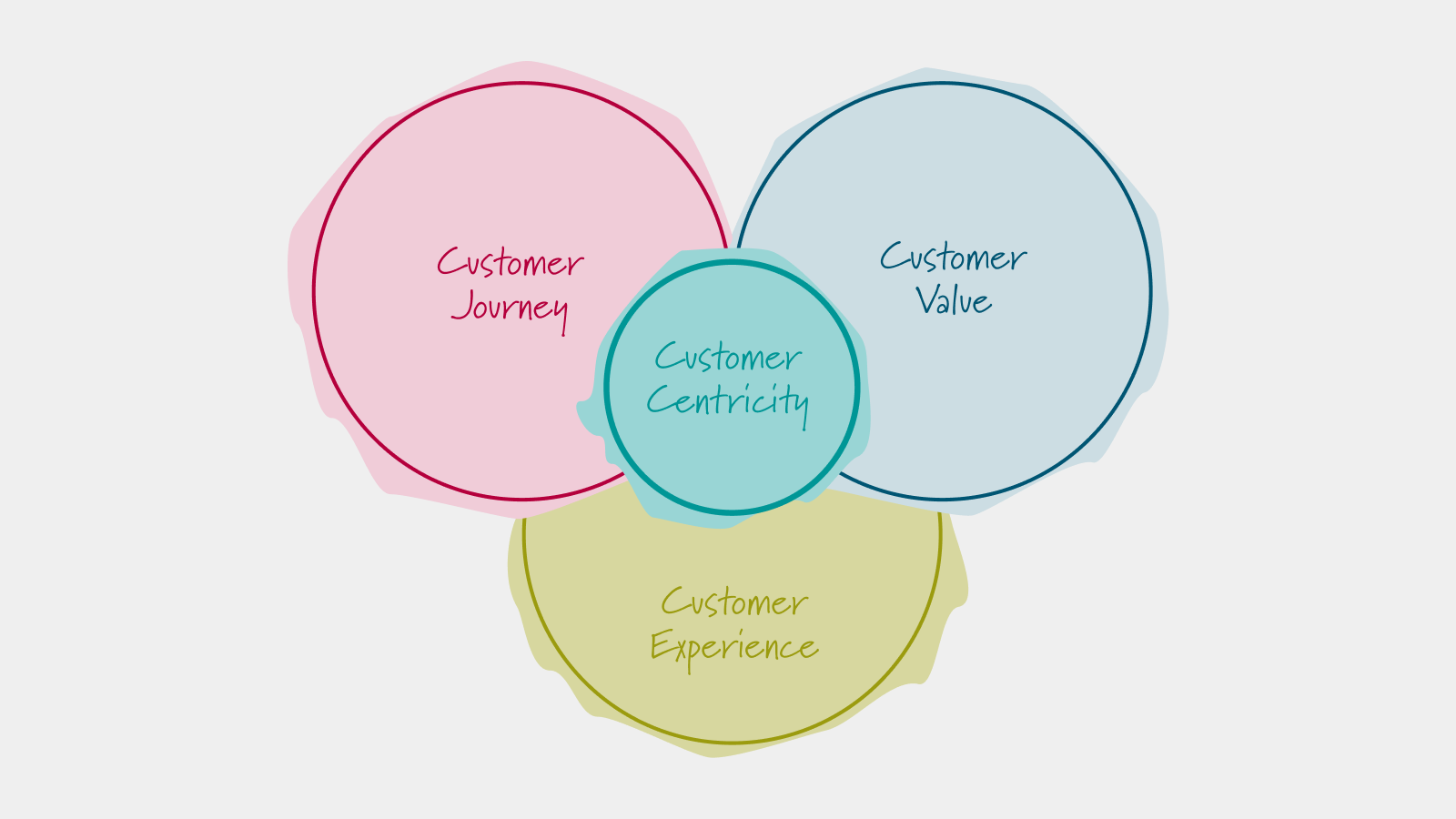
Seven Levers That Influence Your Revenue
The dynamics of customer development and seven levers that influence your revenue

Oliver Grasl
1.11.2013
An investigation of the dynamics of customer development and identification of seven levers that determine your revenue
Prototyping The Customer Development Process
The ability to identify markets and develop customers from them is crucial to any company, whether it is a start-up or mature. Indeed, in their best-selling book on the customer development methodology Cooper and Vlaskovits claim that “most startups fail because they do not develop their market, not because they do not develop their product”.
Over the next few blog posts, I will investigate the dynamics of customer development using a business prototyping approach: first making our understanding of the situation explicit using some simple sketches and diagrams, then build a small, quantitative business prototype to verify our understanding and finally use it to experiment with new business designs and policies.
This post starts with a look at the overall dynamics of a business from a high-altitude (“helicopter perspective”), then identifies some of the key levers that influence your revenue, before it finishes with a small business prototype for you to experiment with and to whet your appetite for what is to come in the next posts.
The Feedback Loops That Make or Break Your Business
When investigating the dynamics of a business I like to start with the generic diagram of a company’s value creation logic shown below (see my post How do You Make Money in Your Business? for details on this). Mostly working in a team we walk through all the building blocks and connections, throw out those that are not relevant to the situation, add-ones that are missing and modify the wording (both to make it more concrete and fitting to the situation at hand and to align the wording).

The thinking behind this diagram is as follows: An attractive product portfolio (goods, services or a combination of both), in conjunction with the right customer development capabilities, will lead to new customers and product sales. These sales lead to revenue and generate an inflow of cash, which can be invested into the company’s capabilities and resources. These capabilities and resources are then used to develop and build more great products.
This is a positive feedback loop, which means that initial small changes—say a little growth in your customer base— can snowball into big changes very quickly.
The positive feedback loop works in two directions, so a small company that utilizes it successfully can become big very fast (e.g. Google, Facebook); but it also means that the fortunes of once successful companies can change very quickly if the tide turns (e.g. take a look at Nokia).
Either way, this reinforcing feedback loop is what drives the growth of all companies, big or small.
Key Questions to ponder: Is your company experiencing this feedback loop right now? Is your business booming? Or are you failing fast?
Needless to say, not all companies grow at exponential rates, the reason for this is because the positive feedback loop is constrained by three negative feedbacks that constrain it:
- Cash constraints. Business activities cost money, the cash available to the company is thus an important constraint.
- Resource constraints. Company activities create a demand for resources, acquiring new resources takes time, costs money; resources may be scarce in the market.
- Market constraints. How many customers a company can acquire is constrained by the number of potential customers in the markets it operates in.
Key Questions to ponder: Which of these feedback loops is holding you and your company back? What can you do about it?
Before we move on we should note that the diagram above also contains three further feedback loops:
- A positive feedback loop leading from the companies product portfolio to its capabilities and back again.
- A positive feedback loop leading from customers to capabilities and back again.
- A positive feedback loop from product sales to capabilities and back again.
These feedback loops ensure that the company's capabilities increase with experience: the more products it develops, the more customers it serves and the more products it sells, the more the company’s capabilities will grow (and the harder it will be to compete against it).
Key questions to ponder: Are you utilizing these feedback loops? Are you learning from experience? Are you learning from your customers?
Zooming in on Customer Development
Because this post focuses on customer development, we can simplify the diagram above and throw out all the building blocks and connections that are not relevant; we can also be more specific and use the concrete term customer development capabilities instead of generic capabilities.

Now that we have simplified the diagram we can take it one level deeper and be more precise about the factors that influence the revenue.
First and foremost, the number of customers you generate will depend on the number of potential customers out there (i.e. the size of the target market you are addressing) and this will depend on your product portfolio. The number of potential customers is equal to the market size minus the number of actual customers.
I have illustrated this in the following diagram.

But just having a large number of potential customers is not enough by itself, you will have to do some customer development in order to convert these potential customers into actual customers. We can measure how good you are at doing this through the customer acquisition rate. This rate will depend on your customer development capability, e.g. on how many people you have on your team and how experienced they are.

Whenever we introduce a new building block we should try to identify all the other building blocks that influence it. In this case, the rate at which you acquire new customers will not just depend on your customer development capabilities, it will also depend on the value your product provides to your customer. I have added product value to the diagram.

While it is important to win new customers, it is even more important to keep the ones you already have—we measure this using the churn rate. There are many things you can do to ensure your customers stay with you, e.g. provide a good after-sales service, keep in touch with regular product updates or build a customer community. Whatever the concrete measures, the churn rate will therefore also depend on your customer development capabilities.

Next, let us move on to product sales. The product sales depend on the number of customers you have and on how much each customer buys on average (i.e. the sales volume) and on the average product price. The product price will depend on the product and will have a negative impact on the product value. The sales volume will depend on the perceived product value and on your customer development capabilities (e.g. you could offer supplementary products or services).

The next lever you can use to grow revenue is to ensure the customers you already have buy from you again and again – we measure this via the repurchase rate. Again there are plenty of actions you can take to improve your repurchase rate, such as offering rebates to faithful customers or building a customer community; it therefore also depends on your customer development capabilities. The repurchase rate will also depend on the value your product offers and on the breadth of your product portfolio (e.g. supplementary products, follow-on services).

The diagram is fairly complete now but I am feeling a little unhappy about the product value building block. As it stands it just seems to be influenced negatively by the product price. What positive influences does it have?
This is a very deep topic worthy of its own investigation, but for now, I think it is safe to say that product value depends on the quality of a product—if the quality is high and the price is relatively low, the value will be perceived as high. The product price itself will also depend on the product quality because you can charge more for a high-quality product.
To complete the picture, I have also added the product development capability, which affects both the product quality and the product portfolio—I will look at the details of this capability in a future blog post.

A Brief Summary (And a Little Experiment)
Phew—we have identified seven levers you can work on in order to increase your revenue and have come up with a diagram that shows how they are interconnected.
These levers are so important to building a successful business it is worth stating them again (in alphabetical order):
- Customer Acquisition Rate
- Customer Churn Rate
- Market Size
- Product Price
- Product Value
- Repurchase Rate
- Sales Volume
I have highlighted these levers in the final diagram.

To close this post and whet your appetite for my next post, let us try a little thought experiment:
Say your business already has 10 customers and you decide to start a referral marketing program, asking your customers to recommend your product to their friends and clients. Assume each of your customers recommends you to 1 of their contacts per month, and you manage to win only 5% of these customers.
How many customers would you have after 5 years (i.e. in 60 months)?
You can find the answer in the graph below. Did you guess that figure? Is not it amazing?
You can also see this graph at https://prototypes.transentis.com/wordofmouth/.
We will look into the underlying model over the next couple of blog posts—meanwhile, please do experiment with different settings and ponder these questions:
- How high does the contact rate have to be to reach market saturation?
- What does the resulting S-shaped curve remind you of?
- Is there anything you could do to achieve that kind of effect for your company?
In my Exploring The Dynamics of Customer AcquisitionI will examine the first two levers—the market size and the customer acquisition rate—in more detail. I look forward to having you back then.
Workshops
Resources
All Rights Reserved.


